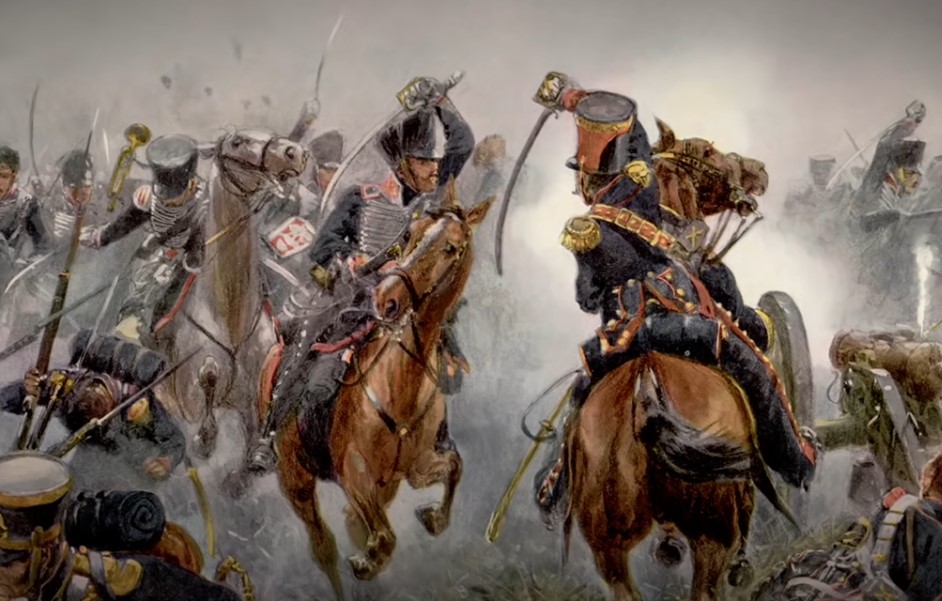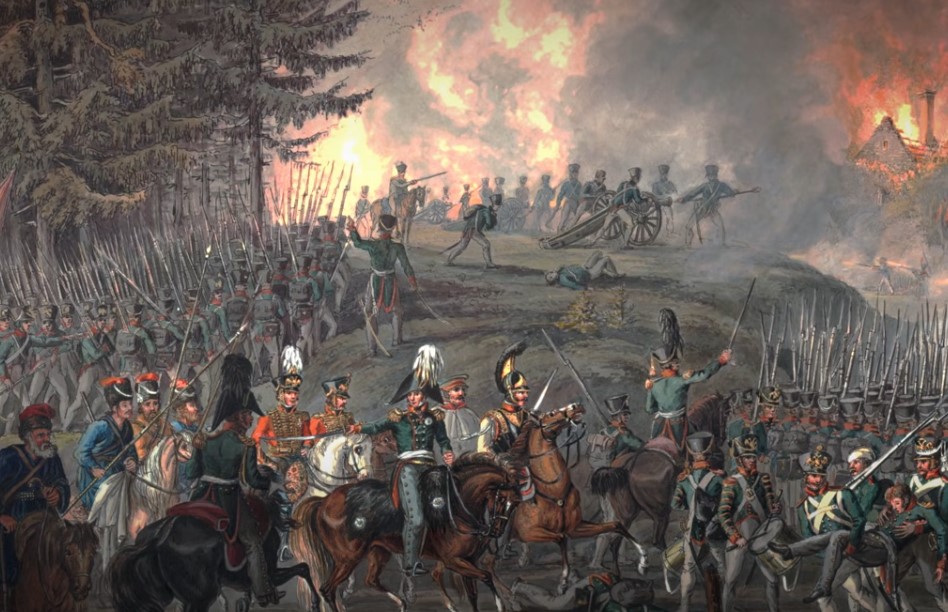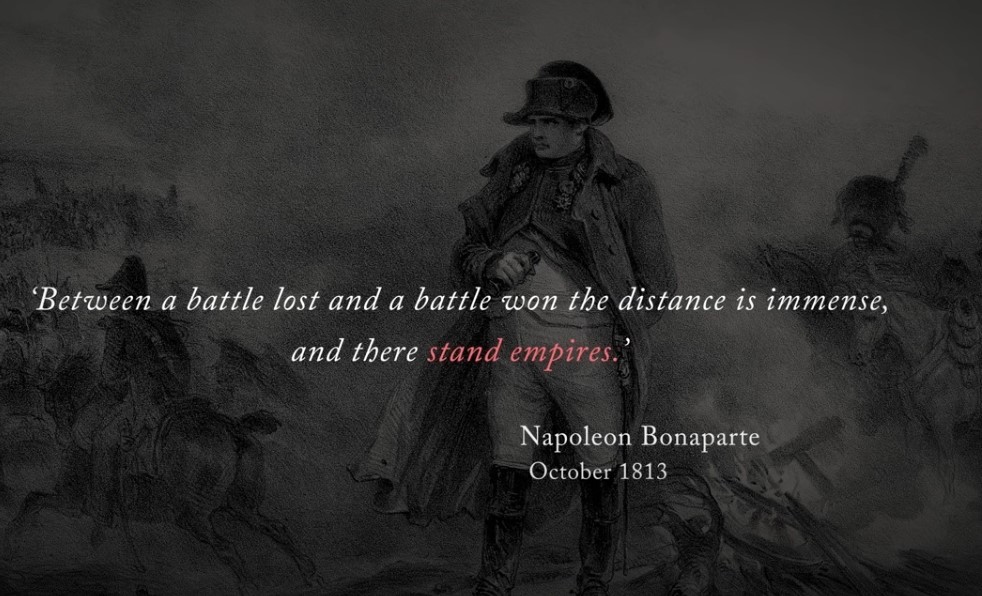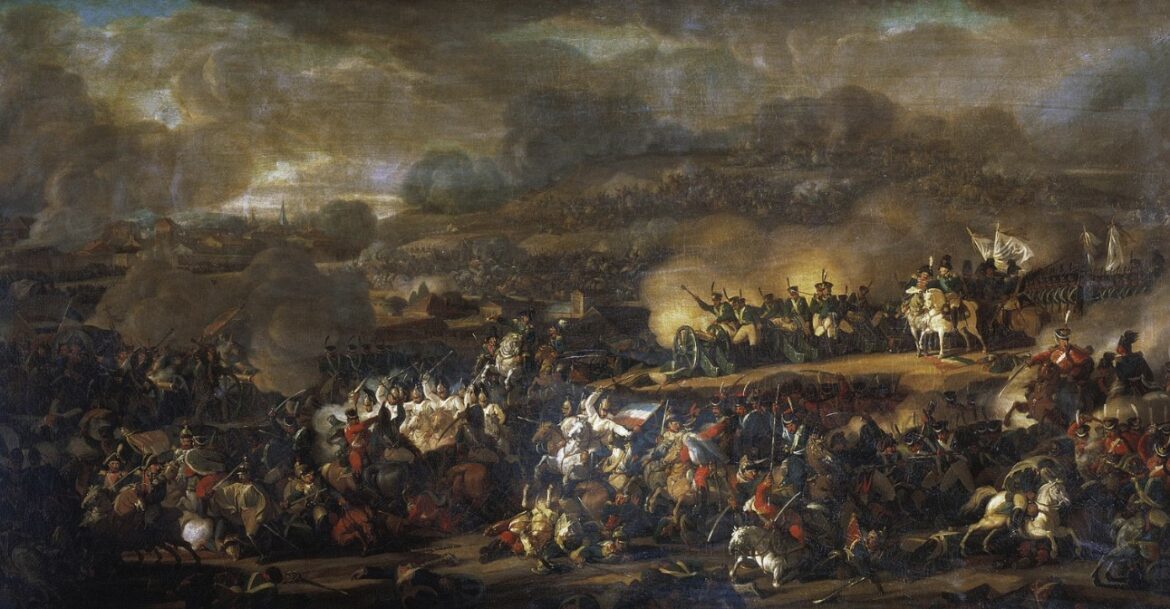100 years before the first world war began in 1914 to apocalyptic scenes of men of all nations fighting through mud and trench fortifications, 1914 itself became known as the “great” war (as if it was great for those on the front lines?).. But the term World War was only attributed to this conflict after another apocalyptic war of nations in the early 1800s. Indeed 1813 saw the first world war of its time where virtually every nation of Europe was pitted against each other, fighting upon either 2 sides.

Napoleon, leader of one of those sides of naions represented the changes that had come from the French revolution and the removal of the King of France (by guilatine no less).. Napoleon rising to establish his own form of Monarchical rule as being crowned Emperor of France no less. Indeed it was an era of bloodthirsty battles that raged accross Europe from Spain and Portugal, the seas around the globe and east towards Moscow and Vienna in Austria; with even one campaign into Egypt calminating in the Battle of the Pyramids.
The German Campaign (German: Befreiungskriege, lit. ‘Wars of Liberation’) was fought in 1813. Members of the Sixth Coalition, including the German states of Austria and Prussia, plus Russia and Sweden, fought a series of battles in Germany against the French Emperor Napoleon, his marshals, and the armies of the Confederation of the Rhine – an alliance of most of the other German states – which ended the domination of the First French Empire.[c]
After the devastating defeat of Napoleon’s Grande Armée in the Russian Campaign of 1812, Johann Yorck – the general in command of the Grande Armée’s German auxiliaries (Hilfskorps) – declared a ceasefire with the Russians on 30 December 1812 via the Convention of Tauroggen. This was the decisive factor in the outbreak of the German Campaign the following year.

The Spring Campaign between France and the Sixth Coalition ended inconclusively with a summer truce (Truce of Pläswitz). Via the Trachenberg Plan, developed during a period of ceasefire in the summer of 1813, the ministers of Prussia, Russia, and Sweden agreed to pursue a single allied strategy against Napoleon. Following the end of the ceasefire, Austria eventually sided with the coalition, thwarting Napoleon’s hopes of reaching separate agreements with Austria and Russia. The coalition now had a clear numerical superiority, which they eventually brought to bear on Napoleon’s main forces, despite earlier setbacks such as the Battle of Dresden. The high point of allied strategy was the Battle of Leipzig in October 1813, which ended in a decisive defeat for Napoleon. The Confederation of the Rhine was dissolved following the battle with many of its former member states joining the coalition, breaking Napoleon’s hold over Germany.

After a delay in which a new strategy was agreed upon, in early 1814 the coalition invaded France, coinciding with the march of Duke of Wellington’s British army northward from Spain into southern France. Napoleon was forced to abdicate and Louis XVIII assumed the French throne. The war came to a formal end with the Treaty of Paris in May 1814.
As avid readers of history we watched this facsinating video portraying one of the finale campaigns of that time around Leipzig – what was called the Battle of Nations of its time. a fascinating but chaotic episode from history.
Video here:
Video created by you tube channel here – we recommend subscribing to their channel.

